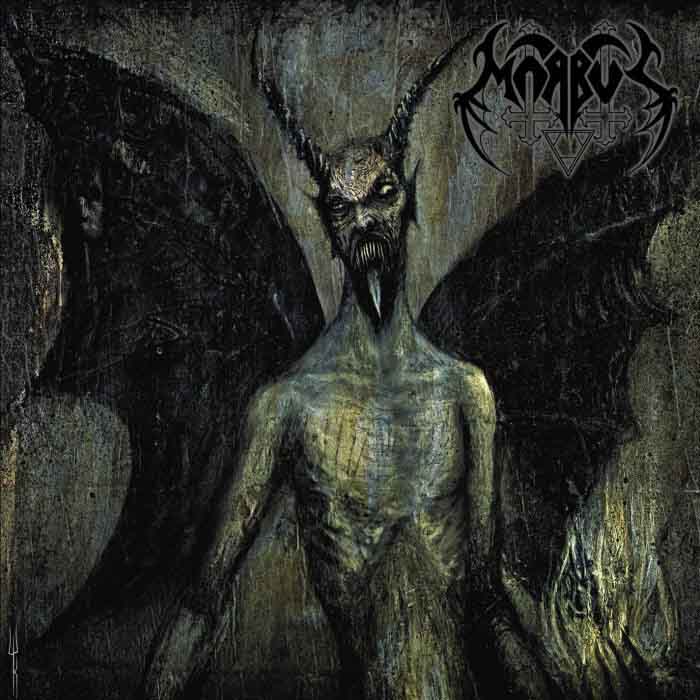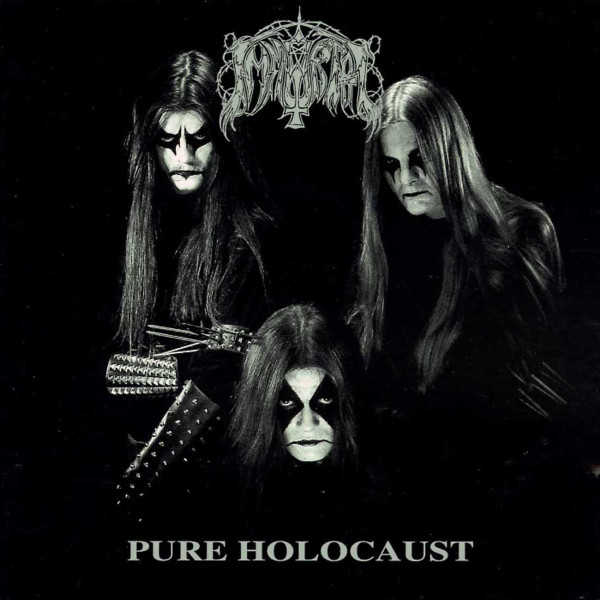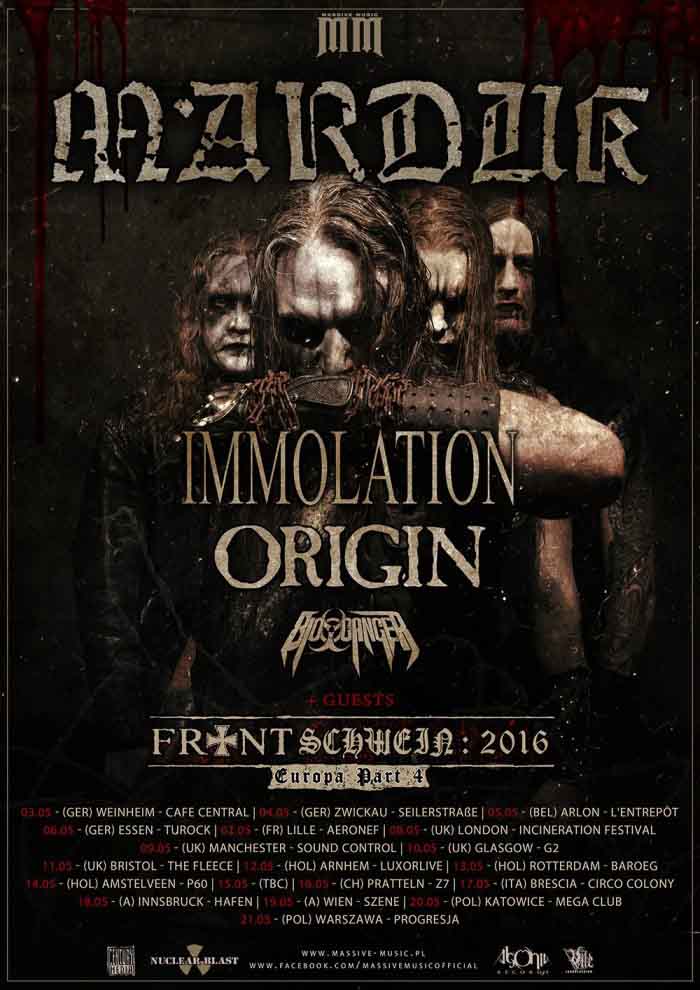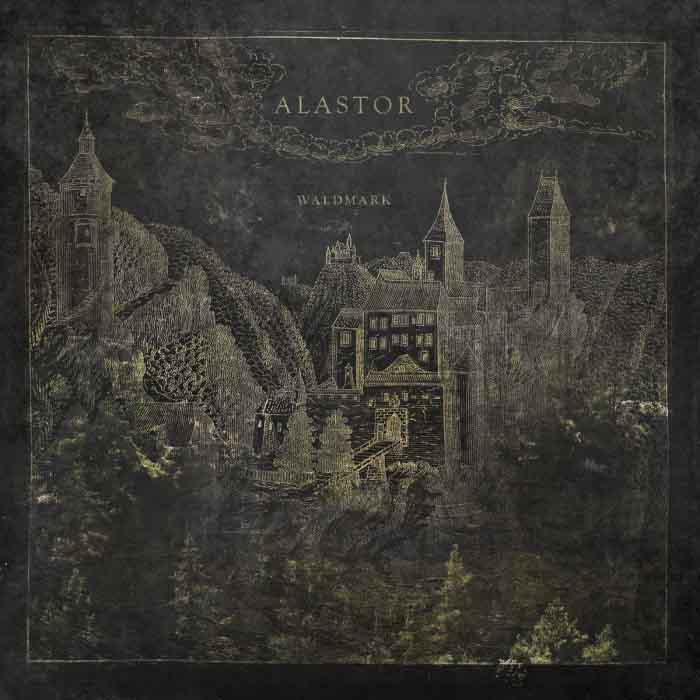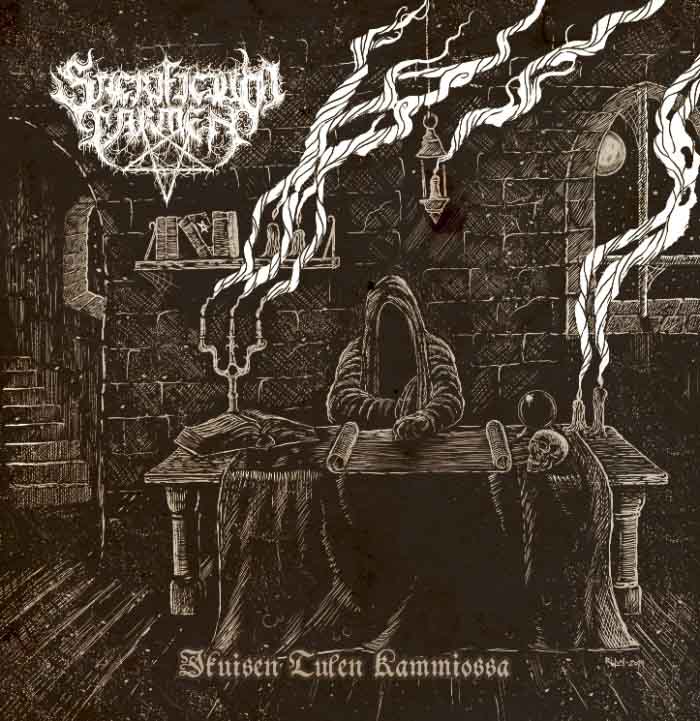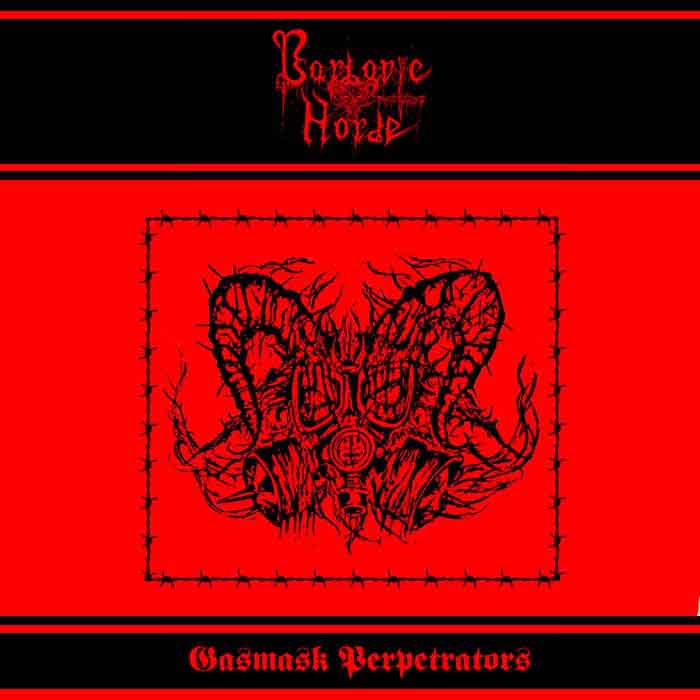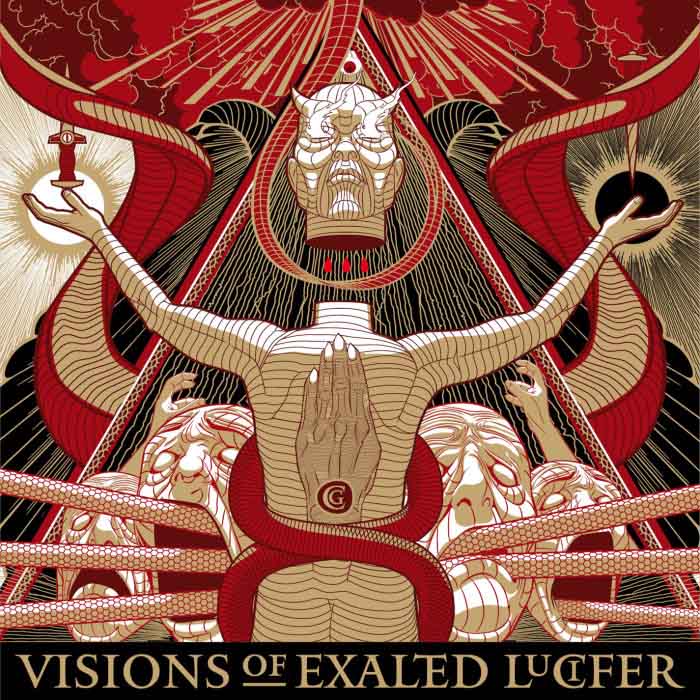Article by Corey M
An astounding eighteen years after releasing their debut full-length, Sorcier des Glaces releases North, maintaining their streak of high-quality albums. The themes of their last album, Ritual of the End (one of 2014’s best releases), are still present here and revolve around the band’s signature lyrical and melodic concepts; descriptions of people and places undergoing freezing damnation, in their unique vision of death occurring over epic spans of time.
This music holds the rare power to instill visions and sensations of ice-covered ruins and crippling cold by its melodic prowess alone. However, the vocals and lyrics are praiseworthy as well as the delivery is unnervingly clear, poetically orating scenes of melancholic morbidity illustrated by the music. This is achieved by Sorcier des Glaces’ idiosyncratic approach to writing long riffs with slow and steady chord changes all augmented by faster-moving melodies that anticipate and resolve the myriad melodically unorthodox transitions. It’s so rare to hear this style of complex harmonic activity performed this adroitly that the only similar album I can think of that achieves this level of complexity tempered by an intuitive sense of coherency is Far Away from the Sun. That is a high compliment.
In terms of technical performance, the musicians’ set-up is very similar to what is heard on Ritual of the End. Driving drums impel the helical, tremolo-picked, complimentary melodies which the lone guitarist/bassist cleanly divides into trios. The main melodies are carried by the rhythm guitar’s very long chains of power chords and the bass guitar modifies the basic root notes of the rhythm guitar, adding much harmonic depth to the songs. Meanwhile, one or more guitars play high-register leading melodies that expertly illuminate the emotive potential of the progressions. Playing their instruments at such a wide range of timbre and speed creates a broad, orchestral sound. The band’s creative flexibility allows the orchestra to tower indomitably, or branch out and flow smoothly, winding naturally around musical obstacles, like the trickle of water over irregular, rocky terrain.
The musicians even get a little bit more boldly experimental on North, particularly during the title track “North”, utilizing some long sections of cleanly picked chords that mutate and creep toward obscure resolutions while the bass dances its own giddy cadenza beneath the reverberating guitars. Typically this sort of deviation would wreck the feel of a song in the hands of inadept musicians, but here it is a delight. “Dawn of the Apocalypse” features an epic lyrical narrative enhanced by some more extreme shifts in dynamic intensity of the music. None of the changes are jarring or illogical; rather, they occur organically.
Despite the long and winding song progressions, I would recommend this album even to uninitiated metal fans. The sweeping guitar orchestration will ensnare anyone with a keen sense of musical passion, allowing Sorcier des Glaces’ malevolent shroud to obscure their sense of righteousness as they succumb to the awesome power of ice and occultic magic. North is an excellent album that will provide many journeys into the frigid recesses of the unconscious, at once harrowing and wondrous.
North may be previewed and purchased directly from Sorcier des Glaces at their official Bandcamp page.
28 CommentsTags: 2016, Black Metal, canada, quebec, Québécois, review, sacramentum, sorcier des glaces

